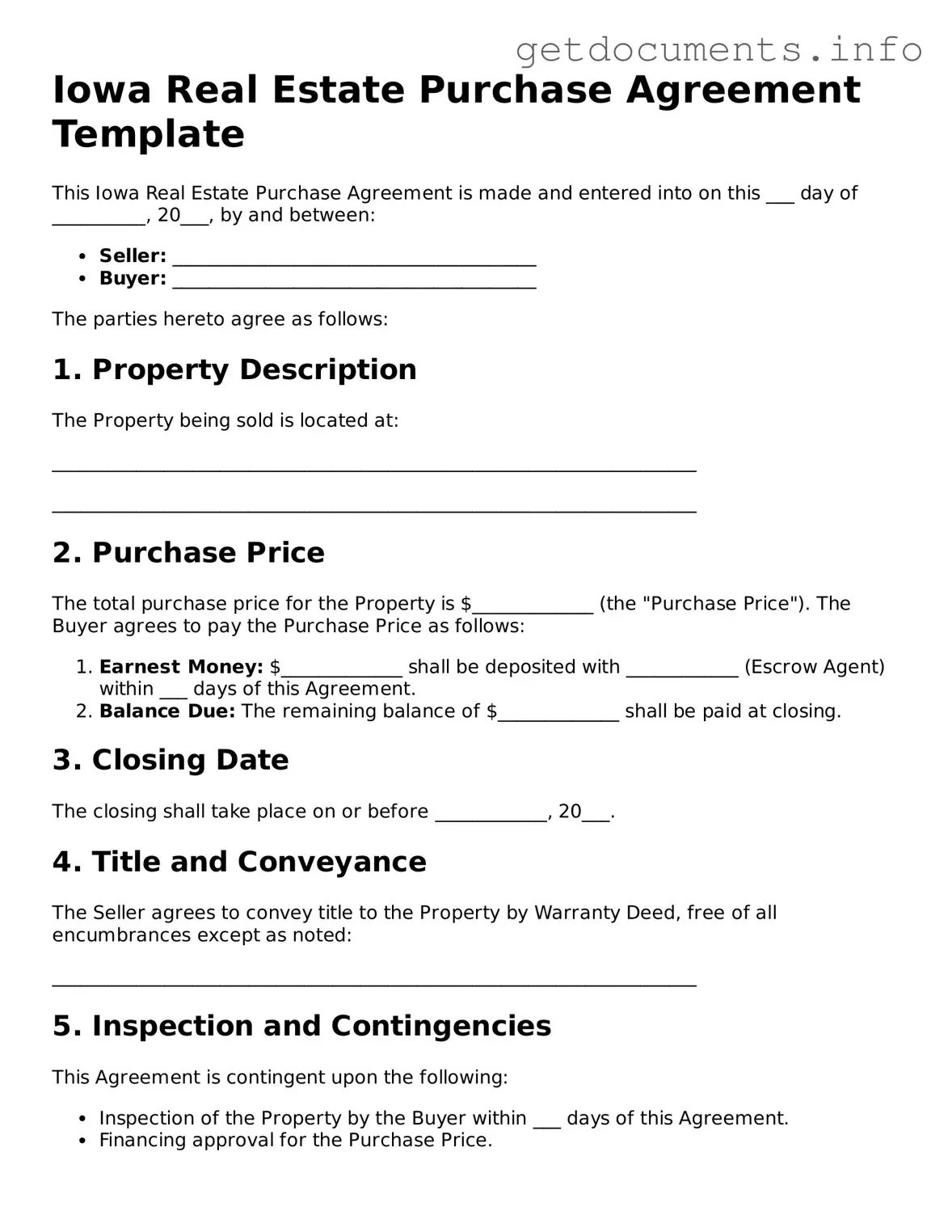Free Real Estate Purchase Agreement Template for Iowa
The Iowa Real Estate Purchase Agreement is a legal document that outlines the terms and conditions of buying or selling real estate in Iowa. This form serves as a crucial tool for both buyers and sellers, ensuring that all parties understand their rights and obligations. To get started on your real estate transaction, fill out the form by clicking the button below.
Access Real Estate Purchase Agreement Editor
